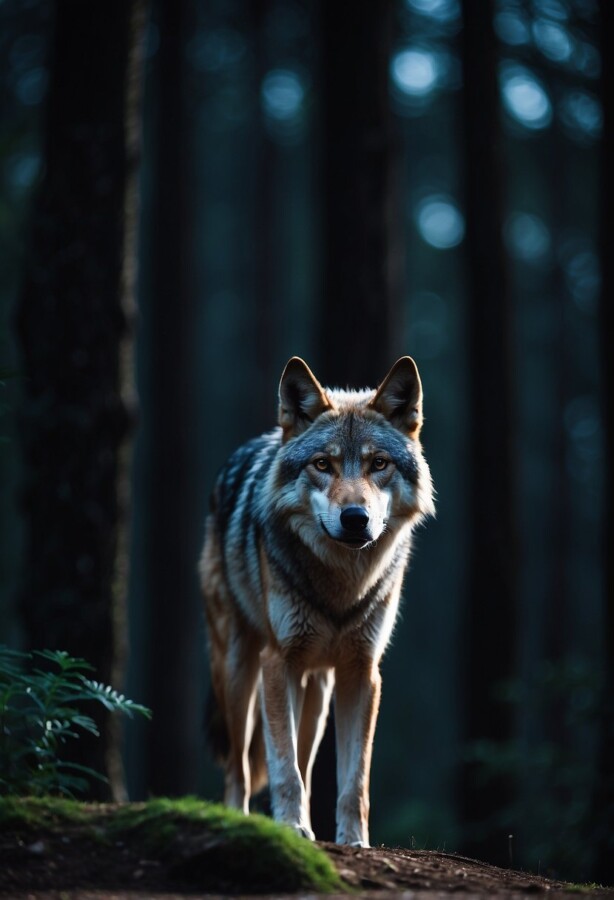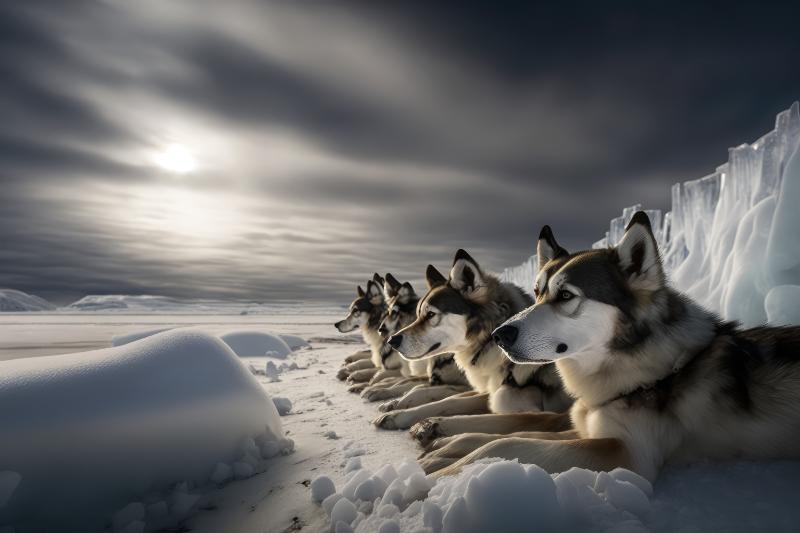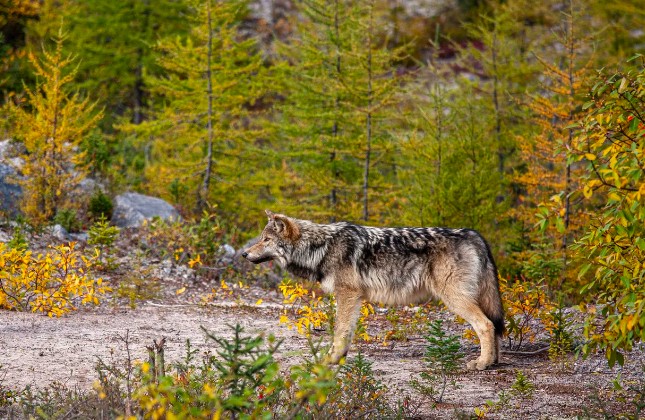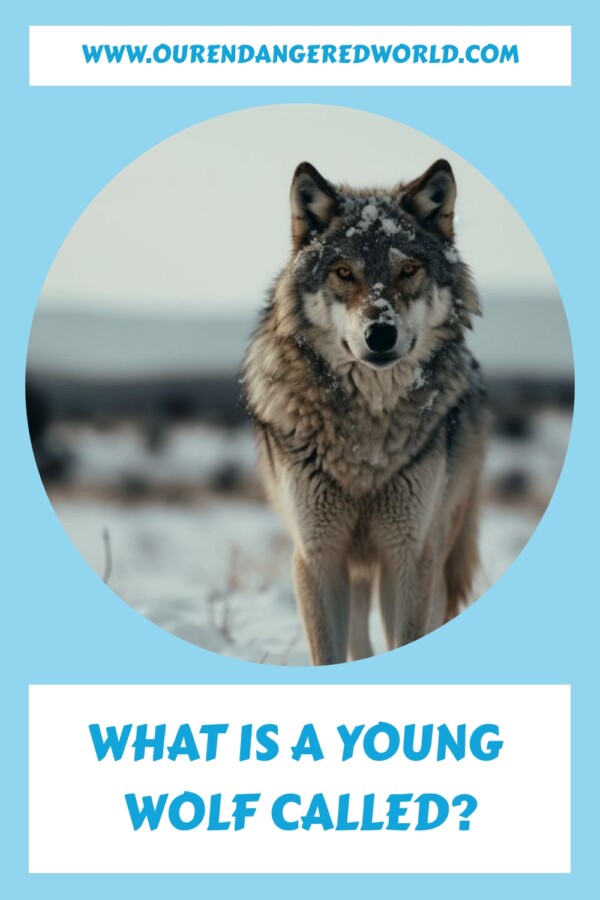Have you ever found yourself howling in confusion when trying to distinguish between different wolf species or their young ones? Know this—you’re not alone! Join us as we venture into the wild world of wolves, illuminating the cryptic terminology used to describe these majestic creatures.
Prepare to unravel the mystery behind what a young wolf is called and dive deep into the various names of wolf species. By the end of this exploration, you’ll be a pro at decoding the language of lupine lifeforms. Embrace your inner wildlife enthusiast; the pack awaits!
A young wolf is called a “wolf pup.” These adorable and playful creatures are born in litter and stay with their mother for about two years, relying on her for food and protection.

What is a Young Wolf Called?
Wolf pups are some of the wild’s cutest and most fascinating creatures. So, what is a young wolf called? A baby wolf is typically called a ‘pup’ or ‘whelp.’ The group of pups from the same mother is called a ‘litter.’ Other animals whose babies are also called pups include dogs, armadillos, puppies, bats, gerbils, guinea pigs, hamsters, minks, moles, prairie dogs, seals, and sharks.
As with wolf babies and other mammals, wolf pups are born alive and completely helpless. At birth, they weigh one pound and have closed eyes. By two weeks old, their blue eyes start to open. They rely on their mothers for food and protection until they are fully weaned, around eight to ten weeks old. A wolf pup’s gestation period is approximately 63 days before they emerge from their den, made of various materials like holes in the ground or fallen trees.
Wolf pups’ mortality rates vary from 30% to 60%, depending on their environment. Threats to these young wolves include diseases, malnutrition, abandonment by the mother, or competition for food with male wolves and packmates. These animals can also become preyed upon by bears, tigers, mountain lions, coyotes, and eagles.
Terms for Young Wolves in Different Species

Different types of wolves are globally classified into two species: gray wolves (Canis lupus) and the extinct red wolves (Canis rufus). Gray wolves have several subspecies that vary based on region and location. Since they inhabit vast regions worldwide and display distinct differences in appearance, such as size and coloration patterns, identifying young wolves can be challenging.
According to scientific journals and records from wildlife organizations like Defenders of Wildlife :
SubspeciesTerm For Young WolvesArctic Gray WolfArctic pupsEastern Timber WolfPupsGreat Plains WolfPupsMexican Gray WolfPups, sometimes called “Kids” Northern Rocky Mountain WolfPups or whelpsEurasian Gray WolfCubs
While most wolf younglings are called ‘pups,’ some subspecies have unique young offspring names. For example, the young Arctic gray wolves are called ‘Arctic pups’ while the cubs of the Northern Rocky Mountain Wolves’ offspring are called ‘whelps.’
It’s worth noting that identifying features and physical differences between subspecies can be challenging, and often, genetic testing is required to identify with certainty. The coloration of gray wolves can vary widely, from white to black and everything in between. When classifying these animals based on their habitat and location, subspecies can overlap.
Commenters note that the third picture of the wolf cub may depict either Eurasian wolves or Northern Rocky Mountain wolves (Canis lupus irremotus). Hence, genetic testing would be necessary for a definitive identification since subtle differences exist between the two subspecies.
From identifying similar characteristics to using subtle differences to differentiate them, understanding the naming conventions of young wolves in different species is essential. Let’s explore what it takes to recognize young wolves visually.
- What is a young wolf called?
- SCIENTIFIC STATISTICS:
- According to the International Wolf Center, a wolf female can give birth to an average of 4 to 6 pups per litter.
- The U.S. Fish and Wildlife Service notes that fewer than half of wolf pups survive their first year due to predators, disease, and malnutrition threats.
- A 2017 study by Durham University found that parental care from both the mother and father wolf greatly increases pup survival rates in the early stages of their lives.
- The takeaway from the provided information is that there are different types of wolves classified into two species: gray and red wolves. Gray wolves have several subspecies that vary based on region and display distinct differences in appearance. Identifying young wolves can be challenging, but specific names exist for offspring of different subspecies. It is important to note that genetic testing may be required for a definitive identification due to subtle differences between subspecies. Understanding the naming conventions of young wolves is essential for recognizing them visually.
Identifying Young Wolves

Have you ever seen a young wolf and wondered what it was called? Wolves have different names depending on their age and gender. A baby wolf is known as a baby wolf and is called a pup or puppy, while its mother is referred to as a she-wolf. The father is commonly called an alpha male, regardless of whether he leads the pack.
Physical Characteristics of Wolf Pups

Wolf pups are born after about 63 days of gestation in dens made of materials such as mud, fallen trees, rocks or holes in the ground that provide safety and shelter for the newborns. At birth, wolf pups weigh only 1 pound, but they grow rapidly under the protection and guidance of their parents.
Wolf pups are undeniably cute – they have fluffy fur, paws larger than their bodies, and bright blue eyes that gradually change color over time. However, they’re not as durable as they may seem. They are at risk of malnutrition, diseases, predation by other animals like coyotes and bears, and abandonment by their mothers.
At about two weeks old, a pup’s eyes start to open, marking an important developmental milestone. Their teeth will begin to emerge approximately between weeks 3 and 4, allowing them to transition from a milk-only diet to solids over time. Until they reach 8-10 weeks old, they rely on their mother’s milk for sustenance, along with her protection and constant attention.
Adolescent wolves undergo significant physical changes as they mature into adulthood at about 6-8 months old. They shed their puppy fur for thicker layers better suited to freezing weather conditions they’ll eventually face in chilly mountain or arctic settings. Let’s break down some behavioral traits that might come in handy when identifying young lone wolves.
See Related: The Largest Wolves in the World
Behavioral Traits of Young Wolves

Baby wolves are called ‘pups’ or ‘whelps.’ Wolf pups have beautiful blue eyes when they are born and dark blue eyes that change color as they grow older. A group of pups that come from the same mother is called a ‘litter.’ A wolf pup’s gestation period is approximately 63 days. They stay with their mothers for about two years. Wolf pups are born in a den made of various materials, like holes in the ground or fallen trees.
Wolf pups weigh one pound at birth, and their eyes start to open after two weeks. They rely on their mothers for food and protection until they are fully weaned, around 8-10 weeks old. Wolf packs consist of both adult wolves and young wolves. Pups play an essential role in strengthening social bonds within their groups, particularly with their parents. At around six months, young wolves’ physical appearance changes as they shed their baby coats and acquire long guard hairs suitable for cold environments.
As young wolves mature, they learn hunting skills by emulating adult pack members. By one-year-old, most female wolves mature sexually, although only select pack members might breed and produce litters. In summary, wolf pups play a critical role in shaping the social dynamics of wolf packs while learning important skills necessary to survive in the wild.
Names of Different Wolf Species

Wolves are found throughout much of North America, Europe, and Asia, including many islands. Studies suggest there may be up to 38 distinct subspecies of Canis Lupus or Grey Wolves globally (source). Some names used to describe these subspecies include timberwolves (Canis lupus occidentalis), Tundra Wolves (Canis lupus albus), Eurasian Gray Wolves (Canis lupus lupus), and Iberian And Mainland European Wolves (Canis lupus italicus), among others.
While these subspecies share similarities, varying in size and coloration, some subspecies are unique to a particular region. For example, Mexican gray wolves (Canis lupus baileyi) are only found in the southwestern US and Mexico. Eastern wolves (Canis lycaon), previously classified as a Canadian species, is now seen as a distinct population of grey wolves and include populations within Southeast Canada.
While distinguishing wolf subspecies requires advanced scientific knowledge and genetic testing tools, understanding the names and geographic distribution helps one appreciate the plethora of wolf varieties worldwide.
Now that we’ve explored the different names and regions where wolf species are found, let’s examine their life cycle.
Life Cycle of a Wolf: From Pup to Alpha

Wolves are magnificent creatures known for intelligence, strength, and pack mentality. Like all mammals, they start their life as pups. Baby wolves are called “pups” or “whelps.” It’s fascinating to know that the group of pups from the same mother is called a “litter called cubs.” The average litter size ranges between four and six, but it can vary based on food resources and the number of pack members. Wolf moms carry their young pups for around 63 days before giving birth in a den made typically from holes in the ground or fallen trees.
When wolf pups are born, they weigh only one pound and depend entirely on their mother to survive. Their eyes remain closed until they’re about two weeks old, after which they can see the world for the first time with their beautiful blue eyes. Over the next few weeks, wolf pups explore their surroundings cautiously – sometimes staying near their den or a nearby thicket. During this period, they become more independent and move around more confidently.
As wolf pups grow older, they increasingly depend less on their mothers for food supply since solid foods like meat are gradually introduced into their diets by pack mates or mothers themselves through regurgitation. One vital aspect of this process revolves around learning essential hunting skills for survival within a pack.
Wolf pups stay close to their mothers until weaning occurs when they’re about eight to ten weeks old. At this point, wolf pups are fully dependent on solid foods like meat and milk and have learned other critical survival skills. They now take part in regular playtime with other pack members and proper pack hierarchy, where adults and higher-ranking juveniles dominate over lower-ranking individuals.
See Related: Red Wolf: Why Is It Endangered?
Wolf pups continue developing different skills until adulthood when alpha status can be attained through various factors such as physical strength, hunting prowess, and experience. In essence, the transitionary period to adulthood offers extensive opportunities for learning and development.
For example, imagine a female wolf pup born into a pack with two other siblings. Like all pups within the litter, her wolf’s life depends entirely on her mother and pack mates for survival. She spends the first few weeks of her life in a den, later exploring the surrounding area tentatively. As she grows up, she’s taught essential hunting skills by her mother and other high-ranking pack members.
In one instance, while observing an adult pack member hunt a deer, she learns how to make hunting strategies based on visual cues—an integral part of being an efficient hunter. By adulthood, she has learned all the necessary skills to help grow smaller or become queen of the entire pack—becoming an almost alpha female shewolf.
Think of the life cycle of a wolf as a journey from pup to adult, much like that of humans, where there are different stages in which we learn, grow, and develop new skills for survival.
From birth to adulthood, wolves experience intense physical and intellectual growth that shapes their ultimate role within their pack dynamics. This life cycle underscores the importance of understanding these animals’ habits and biological processes in supporting their conservation efforts.
Related Resources:
- The Iconic Animals in Lion King… Explored!
- Devastating Health Impacts of Air Pollution: BMJ Study Links 5.1 Million Deaths Annually to Fossil Fuel Emissions
- These Are the Most Important Animals in the World


